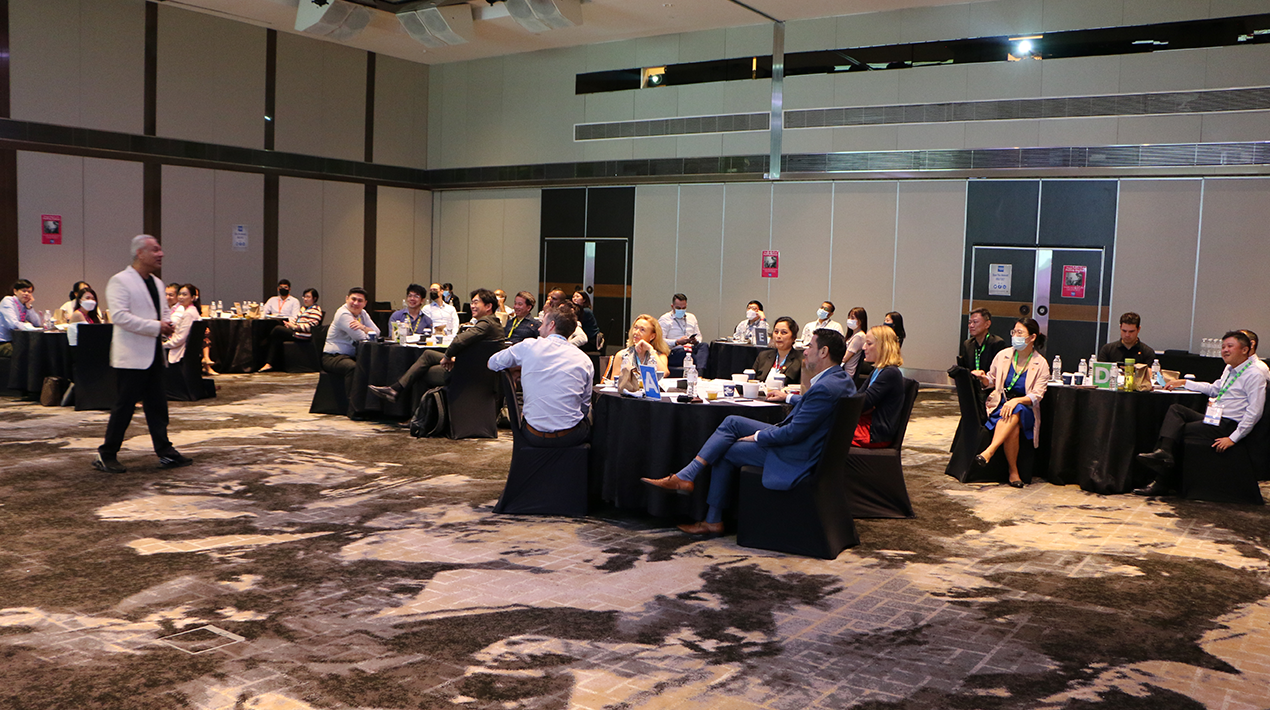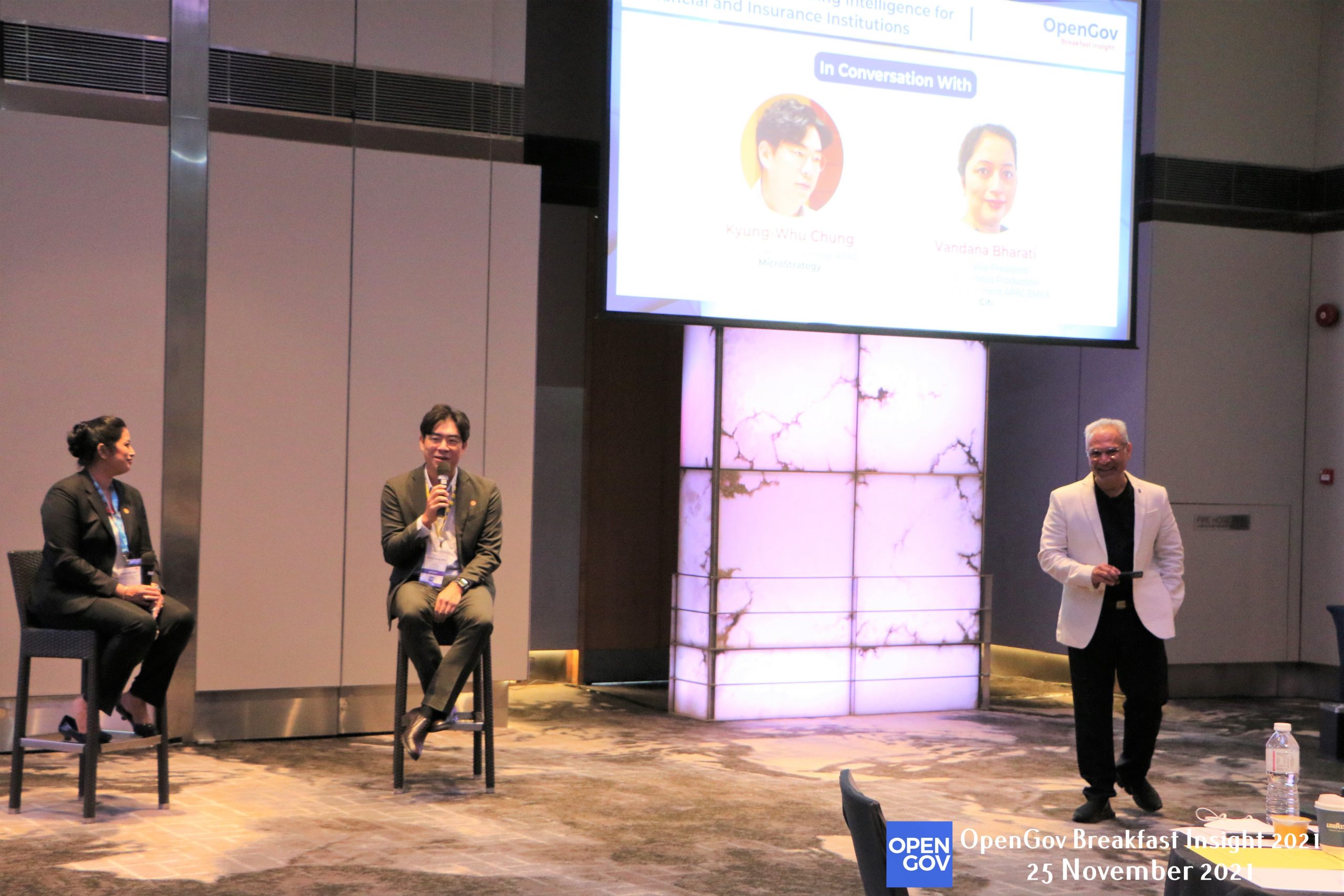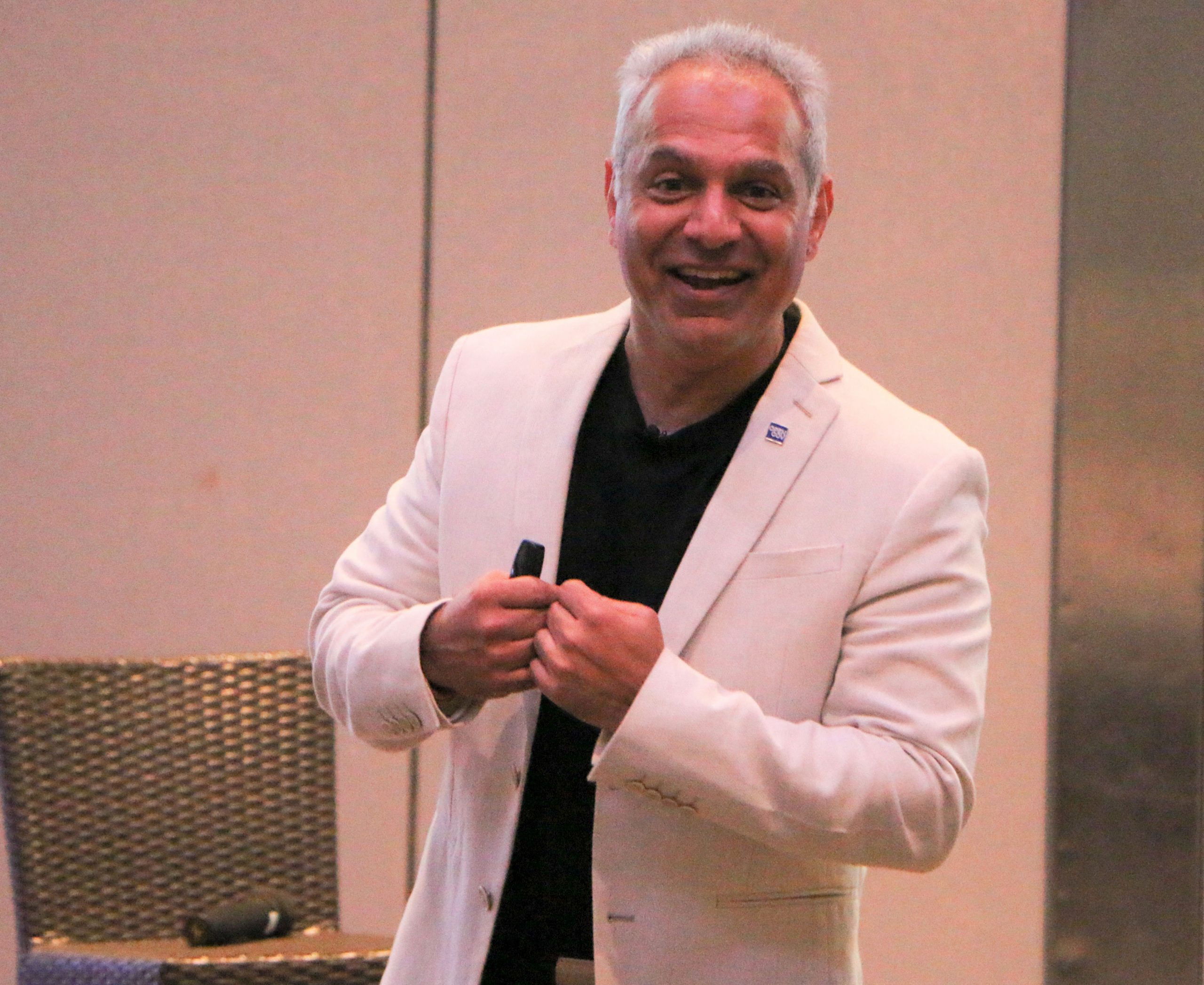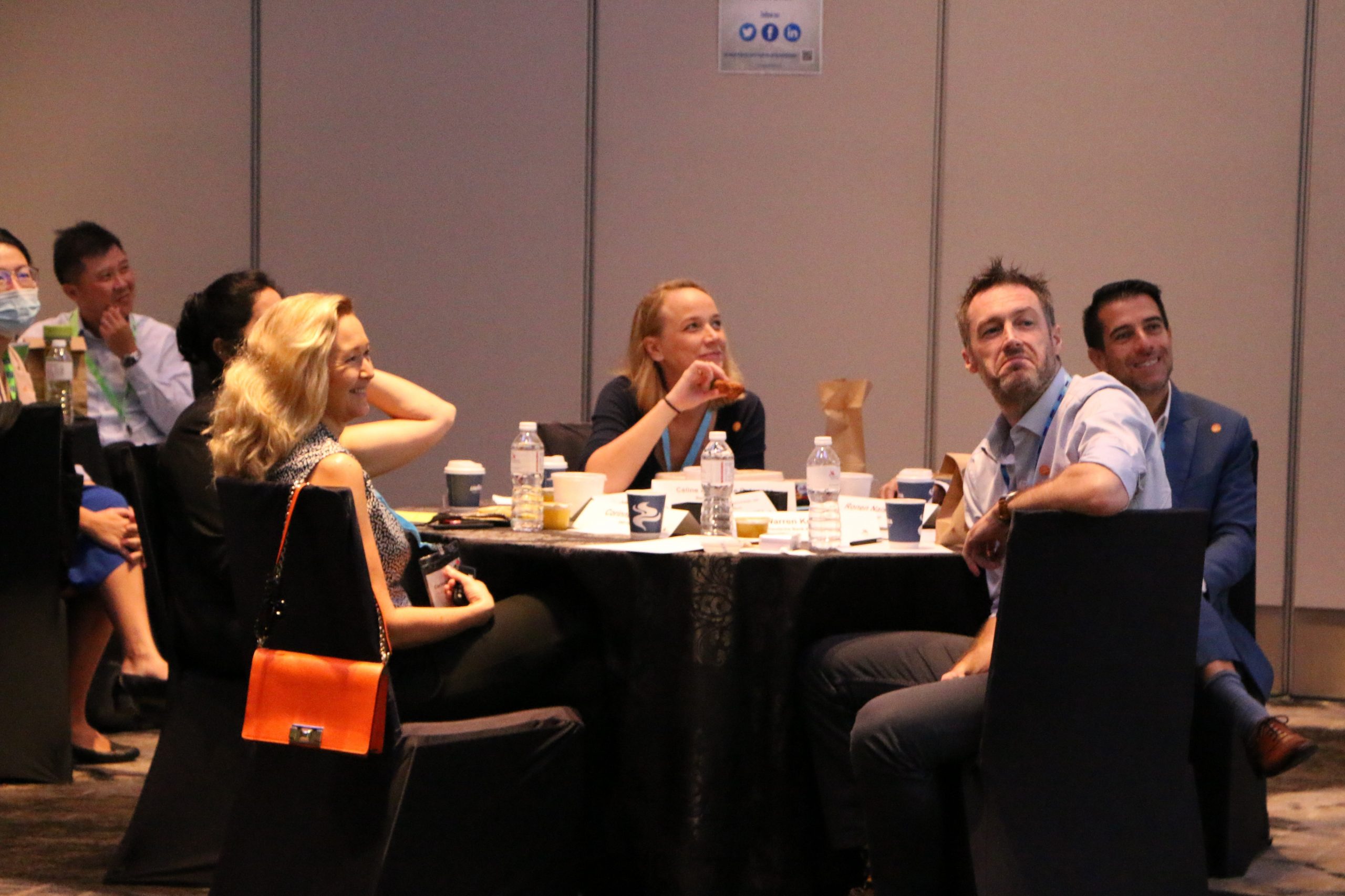
The creation, integration and implementation of information management and finance frameworks are critical in an era where information and data analytics is driving success and growth. Finance and insurance leaders must create frameworks to connect dependencies across processes for reliable information as they attempt to manage a data-driven organisation to achieve their corporate purpose.
Financial and insurance institutions are striving for access to information, which is today an invaluable asset. To better support important decision-making and satisfy demanding customer requirements, it is necessary to secure, analyse and organise unstructured data quickly. Obtaining reliable data while adhering to data governance and compliance will increase the quality, accuracy and accessibility of data.
The notion that financial and insurance institutions should concentrate more on preventing crises rather than merely responding to them is not new. What is new is the capability to successfully pre-empt and mitigate critical events regularly and more successfully.
Recent advances in data analytics, business intelligence, machine learning and artificial intelligence have enabled financial and insurance organisations to better detect and accurately forecast operational difficulties. This exponential improvement in the ability to analyse enormous historical data sets and millions of pages of unstructured text to track patterns and identify potential problems is revolutionary.
By creating business intelligence dashboards, organisations can instantly understand where to increase efficiencies, when to manage costs and how to impress customers with the right financial needs in the long run. Further, data analytics develops a single source of truth for compliance and method to build trust among customers. It also allows organisations to see the bigger picture – understand where to increase efficiencies, cut waste, improve policies and monitor budgets.
How can data analytics transform the operations within financial and insurance institutions?
Capitalising actionable intelligence to drive governance can help institutions accelerate their business. Data governance is the most successful technique for formalising accountability where employees define, produce and use data to execute their job functions quickly. Since good data is needed to improve productivity and customer experience, organisations that adopt technology that enables employees to gather instant data will have an edge over businesses without technology.
With the correct tools, data democratisation can empower people to make informed decisions that can help achieve critical business outcomes. The rate at which data is generated is increasing all the time. People must prepare themselves to function and engage with data in the larger environment and this cannot be done without reliable analytics tools capable of desegregating and connecting previously siloed data, making it manageable from a single place. There is an urgent necessity to improve usable data analysis while becoming increasingly data-driven in decision-making.
Apart from that financial and insurance institutions must be more perceptive in times of business uncertainty to detect and respond to new technology opportunities that drive digital transformation. Institutions must develop the capacity for hyper-intelligence, to shift from reactive to proactive decision making if they want to stay relevant. To achieve that, data has to be accessible to employees at their convenience.
This was the focal point of the OpenGov Asia Breakfast Insight held on 25 November 2021. It was a closed-door, invitation-only, interactive session with Singapore’s top financial and insurance institutions. The session aimed to provide the latest information on how financial and insurance institutions are using data analytics to drive mission-critical outcomes.
Harnessing data analytics to scale impact

Mohit Sagar, Group Managing Director and Editor-in-Chief, OpenGov Asia, kicked off the session with his opening address.
The pandemic has fundamentally changed culture, Mohit asserts. The pandemic has forced governments and businesses to dive headfirst into the next stage of digital transformation and online services. The technology that has been adopted in 2020 and 2021 is what Mohit calls, “band-aid technology,” and it is not digital transformation at its best.
As things settle down, organisations need to take a close look at their architecture. Digital transformation is now an inescapable journey for organisations wanting to spearhead the modern data experience, he contends. To do so, new technologies must be tapped on to boost performance and improve business processes to allow businesses to stay ahead of the game.
Technology has to be upgraded to enable people to maximise the data that they have. For Mohit, technology is an investment, not an expense. The quality of data collected is more important than ever and organisations are forced to keep up with this demand. To meet these demands, organisations must deploy customised, data-driven applications that meet their complex and varied needs. It is imperative to develop, integrate and adopt information management and governance frameworks.
With the realisation that information is a strategic asset, Mohit stresses that the financial and insurance industries in Singapore are at a tipping point. He observes that people are looking for ease-of-use, sophisticated analytics, as well as superior data and user scalability. Technology can enable organisations to protect, leverage and analyse both structured and unstructured information to better serve and meet mission requirements. In the world of data democratisation, breaking down information silos is the first step toward user empowerment.
There has never been a more important time for data collaboration and a single source of truth with data analytics than now, Mohit is firmly convinced, “Data is a diamond – it is rough but it needs to be polished for it to have value.” Knowing how to access, utilise and harness data is the key. In a evolving digital age, prioritising the customer experience (CX) has become one of the most important and efficient ways to increase engagement. Organisations must learn to pivot accordingly and re-strategise if they want to engage customers and grow their pie of the market.
In closing, Mohit contends that this new world of digital transformation and remote communication will require organisations to utilise the right tools and people together to meet modern expectations. However, Mohit emphasised that the journey does not need to be taken alone. He strongly believes in the power of collaboration and partnerships to expand the capacities of organisations.
Unpacking the trends in the use of data to improve critical decision-making
The opening address was followed by a panel discussion with Kyung-Whu Chung, Director, Sales Engineering, APAC, MicroStrategy and Vandana Bharati, Senior Vice President Data & Analytics Production Service Management APAC EMEA, Citi.

The discussion began with the panellists’ perception of the role of data in organisations. Responding to Mohit’s analogy of data as a diamond, Vandana offered the perspective of “data as electricity.” She believes that it is not about having not too much or too little of it, but enough to make people’s lives comfortable. She emphasised that we exist in a data-driven world and that the challenge is about having quality data to make meaningful decisions, derive customer insights and provide the basis for decision-making.

Another trend she notices is the increase in personalisation. The value for businesses is in making the customer experience frictionless, better and effective. She notes that the intelligence journey leans towards this goal across sectors.
Riding on the series of analogies, Kyung-Whu added the concept of “data as air” into the mix. For him, “data is everywhere” – it is there even before you notice it. However, he notices the issue of people using data without fully comprehending what it is, or having the data but not knowing how to use it. He explains that are several reasons for that.
One reason could be the fact that the people who generate the data may not be the people making the decisions. The second scenario is that data is given but not utilised. Tackling these problems require generating the right data and making it meaningful for people to deliver and make use of it.
He opines that organisations have a good foundation for transformation but will need to understand how to leverage that.
Looking for their thoughts about the challenges they observe in data governance and compliance using technology, as well as the solutions for resolving them, Mohit asks, “How can we make sure that data is democratised?”
Vandana opines that it is an evolving journey. In particular, she sees two prevailing issues. The first is the challenge of data discrepancies and the lack of unified data. She attributes the fact that legacy platforms and infrastructures run in silos. As a result, data assets are fragmented and everyone is collecting data in their way and analysing the data in their way.
The second issue she identifies is that of data lineage. This occurs in the process of shifting data from one system to another. When there are issues with the data, tracking data back to the source is a major hurdle and an extremely tedious task. It is simultaneously a cultural challenge, she believes. There is inertia towards utilising new platforms. “Having the data is not enough. Having the right data and using it is key,” Vandana asserts.
She adds that building analytic tools that can drive real-time intelligence can also provide an edge. “Any data that can identify data corruption translates into savings on the cost of downtime.”
Mohit concurs that maintaining the integrity, quality and source of data is critical in eliminating the case of differing insights.

Kyung-Whu agreed that the cultural aspects are sometimes more important than the technological aspects. Having a single source of truth is paramount in syncing people within the organisation. He observes that there is also a disconnection between the data owner and the data user – the data owner does not dive into generating insights. The issue at hand is in establishing processes that can enable the synchronisation of data. “Organisations need to take the big picture approach,” he says. “The platforms need to be brought together to empower people who are making use of the data.”
When asked what the panellists thought about sourcing for good data, Vandana points out that several strategies can be taken. The first is to look at the code and build in a defensive code that will stop people from entering incorrect data at the source. Nip the problem in the bud. The second strategy is to utilise AI models that can scan frameworks and rules to eliminate bad quality or corrupted data. Finally, she emphasises the importance of human interventions in the monitoring of the data sets.
Kyung-Whu concurs that once data is broken, it becomes expensive to restore. Being able to ensure that data is correct before it is utilised is important. To that end, he believes in communicating data with transparency. Having the assurance that the source of data is legitimate is key to building trust in the data.
For insights on how to utilise technology to drive reactive to proactive decision-making, Kyung-Whu adds the human variable to the discussion with the perpsepctive that while science and technology can be enabling, it comes down to people being proactive in utilising the data for effective decision-making.
 For Vandana, having good monitoring capabilities is not enough. Organisations need to build in processes to identify issues through systems. This involves building predictive and prescriptive recommendation and correlation engines, as well as key models. Only with these measures in place will organisations be able to control and handle outages.
For Vandana, having good monitoring capabilities is not enough. Organisations need to build in processes to identify issues through systems. This involves building predictive and prescriptive recommendation and correlation engines, as well as key models. Only with these measures in place will organisations be able to control and handle outages.
On the note of using technology vis-à-vis human resources in the analysis of data, Mohit observes that the use of AI is a missing link at the moment. He asserts that the Singapore government is in its infancy. “How can we make the use of AI mainstream?” he asks.
In response to that, Kyung-Whu pointed out that there are two ways in which AI is utilised in processes. The first is in the sense of utilising AI to replace humans and the second is to utilise AI to help and assist humans with their work. When it comes to data analytics, he believes it has to be the second use case – organisations cannot rely solely on automated decisions.
The fundamental question for Kyung-Whu is to consider what the problem the organisation is trying to solve. Typically, the end goal tends to be about generating insights – utilising AI to help people who are going to use the data to make decisions.
Vandana points out the trend of AIOps or even no Ops. She agrees with Kyung-Whu that the first question is to identify the business outcome and know the problem that the organisation is trying to solve. She cautions against jumping onto new technology for the sake of it – understanding how it is appropriate is vital.
Steering the discussion to the fundamental issue of culture, Mohit asserts that culture is the biggest deterrent. If culture needs to shift to accelerate transformation, organisational, the question is, how would the panellists approach this issue of cultural change.
For Vandana, her advice would be to “think big, start small.” For her, organisations can begin by building smaller data lakes but making sure that data checks are in place to ensure that results can be generated quickly. This can help with bringing about data awareness. With those results, people can market the use of data further upstream and downstream.
Kyung-Whu feels that changing culture can be done through a top-down approach or by taking the carrot approach. What he had found interesting is to look into the first touchpoint. He defines great insights as insights that will lead to the next question. If organisations can give their employees an effective first touchpoint that will lead to them asking questions, that would be a good start. From there, it would then be about giving people the pathways and training to get the answers to the follow-up questions.
Mohit thanked the panellists for their practical advice and insights, reiterating the key theme that paying attention to culture, on top of technology is an equally important part of the equation.
Interactive Discussion
After the informative presentations, delegates participated in interactive discussions facilitated by polling questions. This session is designed to provide live-audience interaction, promote engagement, hear real-life experiences and impart professional learning and development for the participants. It is an opportunity for delegates to gain insight from subject matter experts, share their stories and take back strategies that can be implemented in their organisations.
 The opening poll inquired about the main challenge delegates face in their data strategy journey. The biggest slice (33%) indicated that they are missing an overall strategy that crosses departments and teams (33%) followed by those that chose the lack of data culture/literacy/skill across employees (28%). The remainder opted for a lack of a centralised tool for sharing and collaboration (22%) and data governance, data privacy and security concerns (11%).
The opening poll inquired about the main challenge delegates face in their data strategy journey. The biggest slice (33%) indicated that they are missing an overall strategy that crosses departments and teams (33%) followed by those that chose the lack of data culture/literacy/skill across employees (28%). The remainder opted for a lack of a centralised tool for sharing and collaboration (22%) and data governance, data privacy and security concerns (11%).
In response to the issues at hand, several delegates acknowledged the importance of having a coherent strategy across departments so that people can be aligned on data use. Other delegates commented that the tools tend to be the first consideration. However, without having the right governance and privacy policies, organisations would run into the problem of not knowing who owns data.
Other delegates pointed out the challenges of access. Most people doing the work or making decisions do not have access to data. There can be data lakes in place but there might not be people with the understanding and intelligence about what the data can do.
“There’s a need to democratise, give skill sets and let people play,” Mohit proposes.
On the top analytic adoption challenge in their organisation, most delegates expressed that the lack of talent and training (30%) while the rest were split between the challenges of limited access to analytics (25%) and data quality and accuracy concerns (20%).
A few delegates suggest that there is an issue of the lack of talent and people who can understand the data. There is still a gap between having data and knowing how to use the data. Other delegates expressed that making access to data and making it pervasive in the organisation is difficult – the people who need data do not have access to the data.
When asked about their organisation’s biggest data management barrier, delegates expressed that real-time insights – the ability to analyse data in real-time (40%) is the biggest barrier. That is followed by issues in data accessibility and sharing (36%), regulatory compliance (12%), data collection/cleansing (8%) and providing trusted data (4%).
Mohit is convinced that culture underpins the challenges that organisations face. Kyung-Whu suggests that someone needs to arbitrate between different people within the organisation who might not be speaking the same language.
Other delegates felt that data collection and cleansing is the biggest barrier. Much of the data is collected in silos and when it gets consolidated in the data lake, the alignment goes off. The challenge lies in making data accessible in a secure manner, with a single source of truth.
The next poll inquired how business users in delegates’ organisations request new data requirements. Most delegates would approach a data analyst in their business unit for support (45%). The other delegates would raise a helpdesk ticket for IT support (32%), go by gut feeling (14%) or simply do not face the challenge as they have a self-service analytic tool (9%).
A few respondents said that knowing who to approach for data is dependent on what the data is needed for or the driver of the data is. Kyung-Whu suggests first understanding what the business users are using the data for. Assessing the use case can help people locate the correct data for their purpose. He also encourages the use of the same dashboard for easier access to data.
The final poll asked about the application that delegates spend the most time on during their working days. Most delegates indicated email (60%) as the most used application. This was followed by the use of productivity applications (like Microsoft Office) (24%) and their business intelligence application (16%).
In response to the results, Kyung-Whu points out that the 16% use of business intelligence applications is higher than usual because most delegates are “data people.” In fact, most people do not utilise data to make decisions in their business. However, data is like air in the personal lives of people. People are constantly fed with data, such as their screen time data and other visualised data.
He drew the parallels and notes that while data adoption in businesses did not increase, data adoption in the personal space is high. “How, then, can the same level of adoption be brought into the business space? How do we bring data to the people who will be using data to make decisions?” he asks.
Conclusion
The session concluded with remarks from Ronen Naishtein, Regional Vice President, Asia Pacific, MicroStrategy, who reiterated the important role of data analytics and the tremendous benefits for financial institutions to leverage them.
He introduced MicroStrategy as a Business Intelligence platform with 30 years of experience in enterprise capability and serving customers where data is the enablement for businesses. They assist organisations in managing data in a secured and scalable way.
“It is clear that data is an enablement for organisations,” he observes. Organisations need to invest in strategy, governance and the accessibility of data. MicroStrategy can provide organisations with the agility, power end-users to harness data, and enable people to make fast and timely decisions.
In closing, he invited the delegates to reach out to his team to explore ways they could work together to assist them on their journey.
















